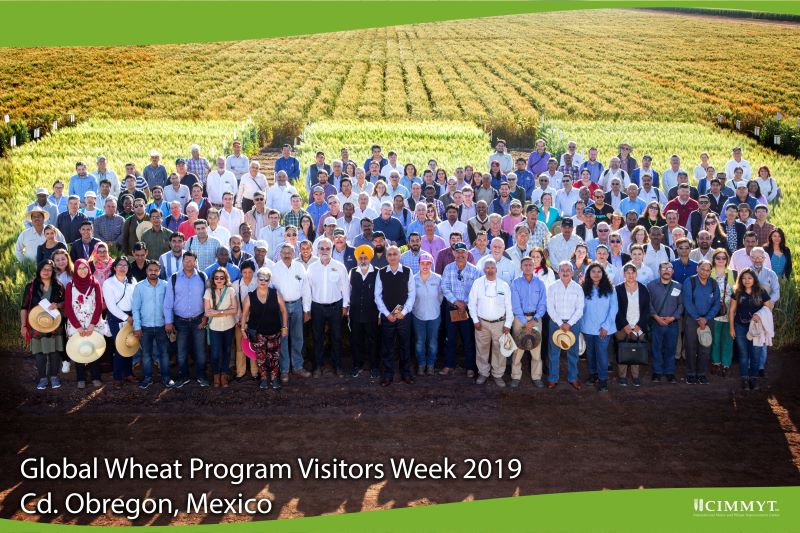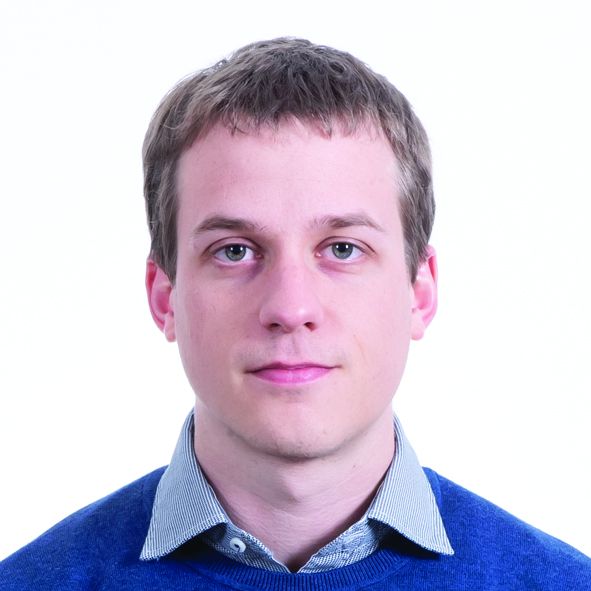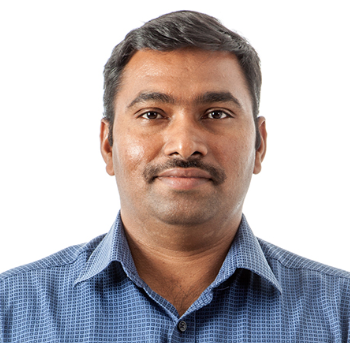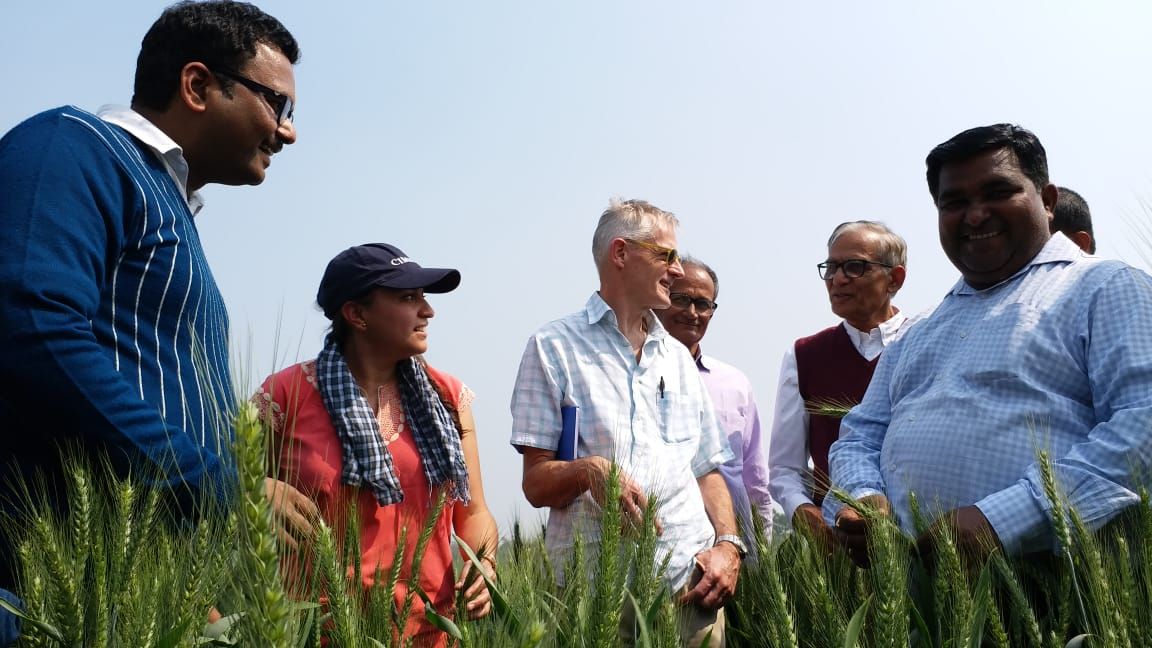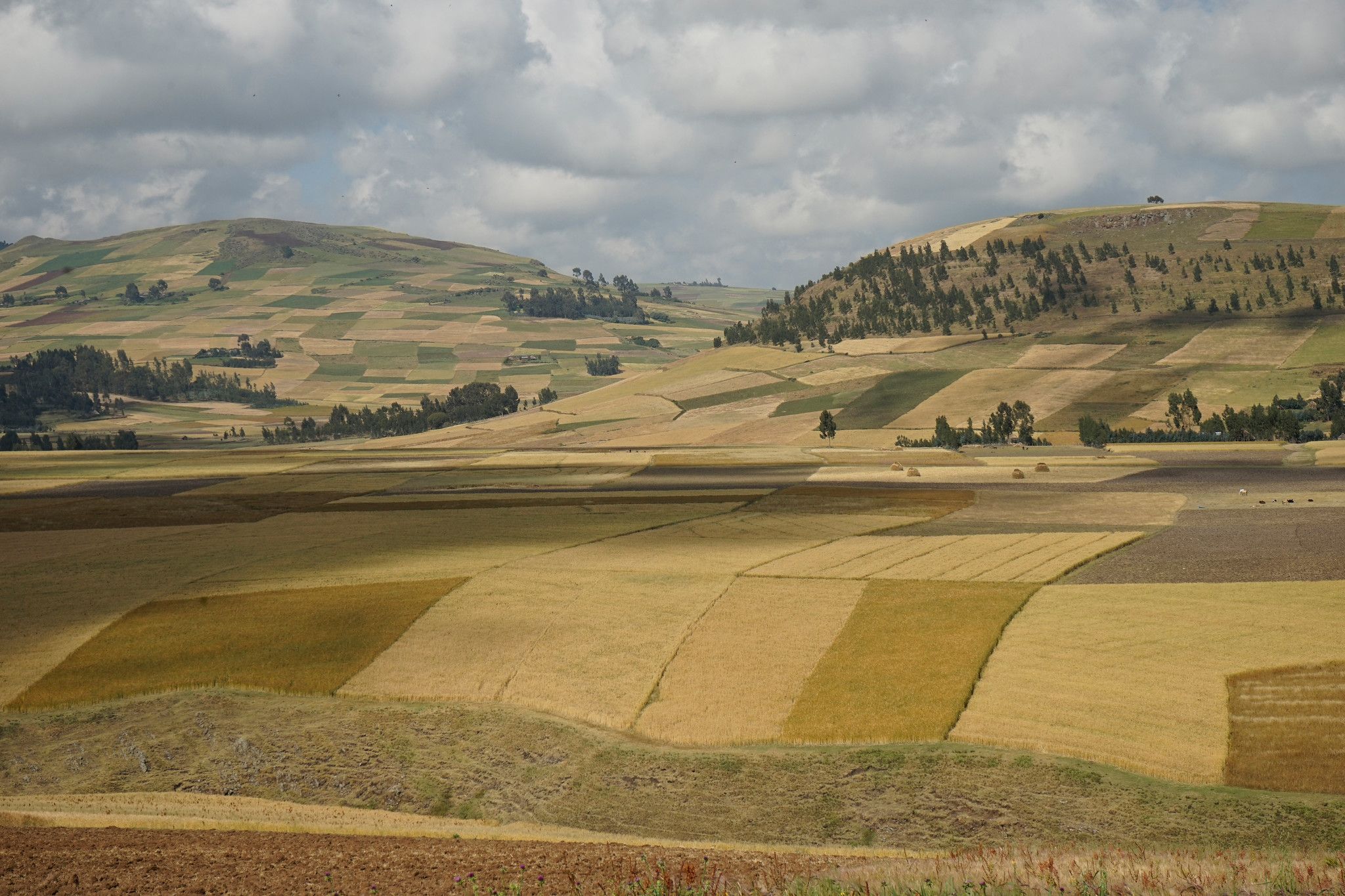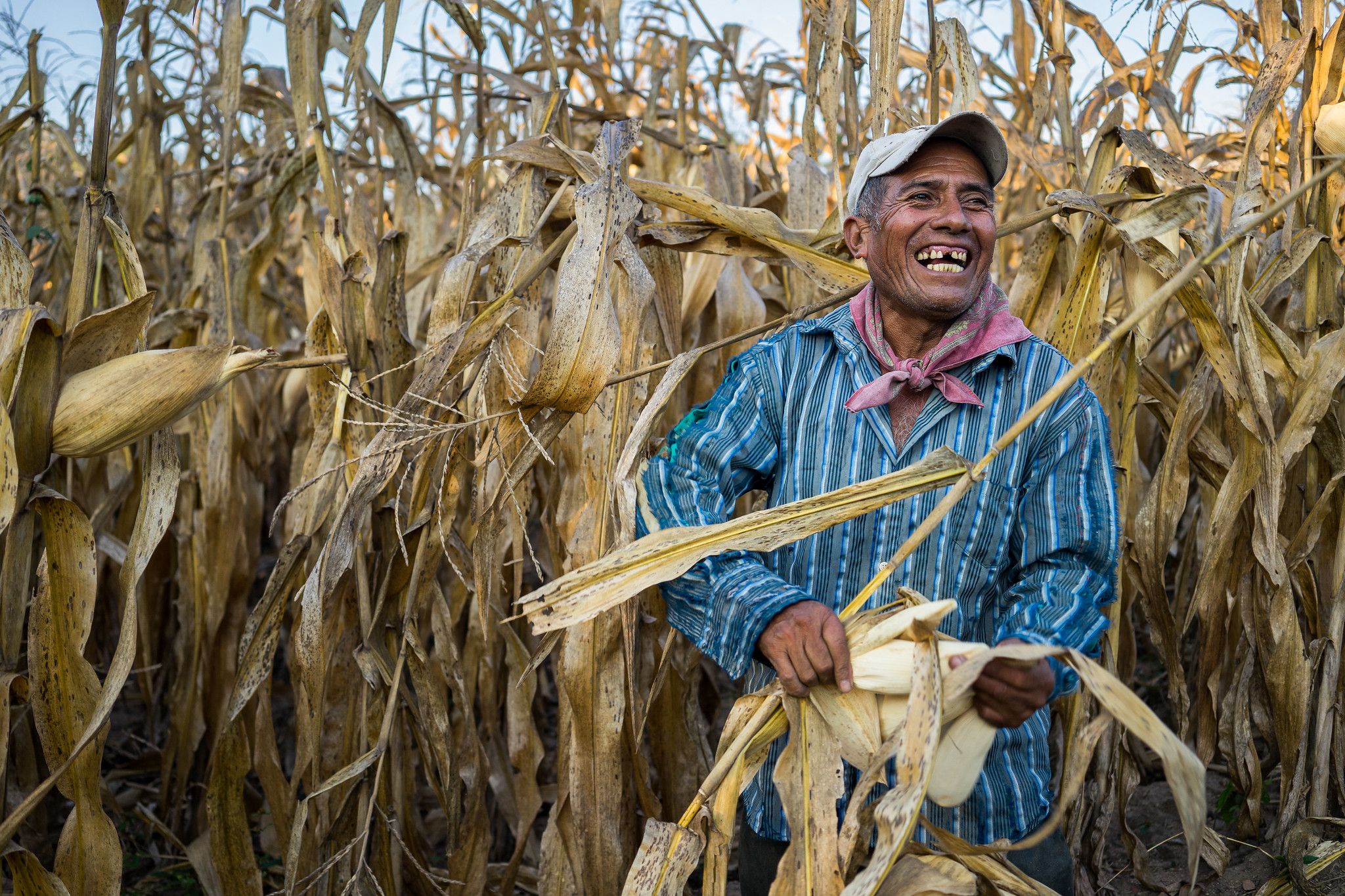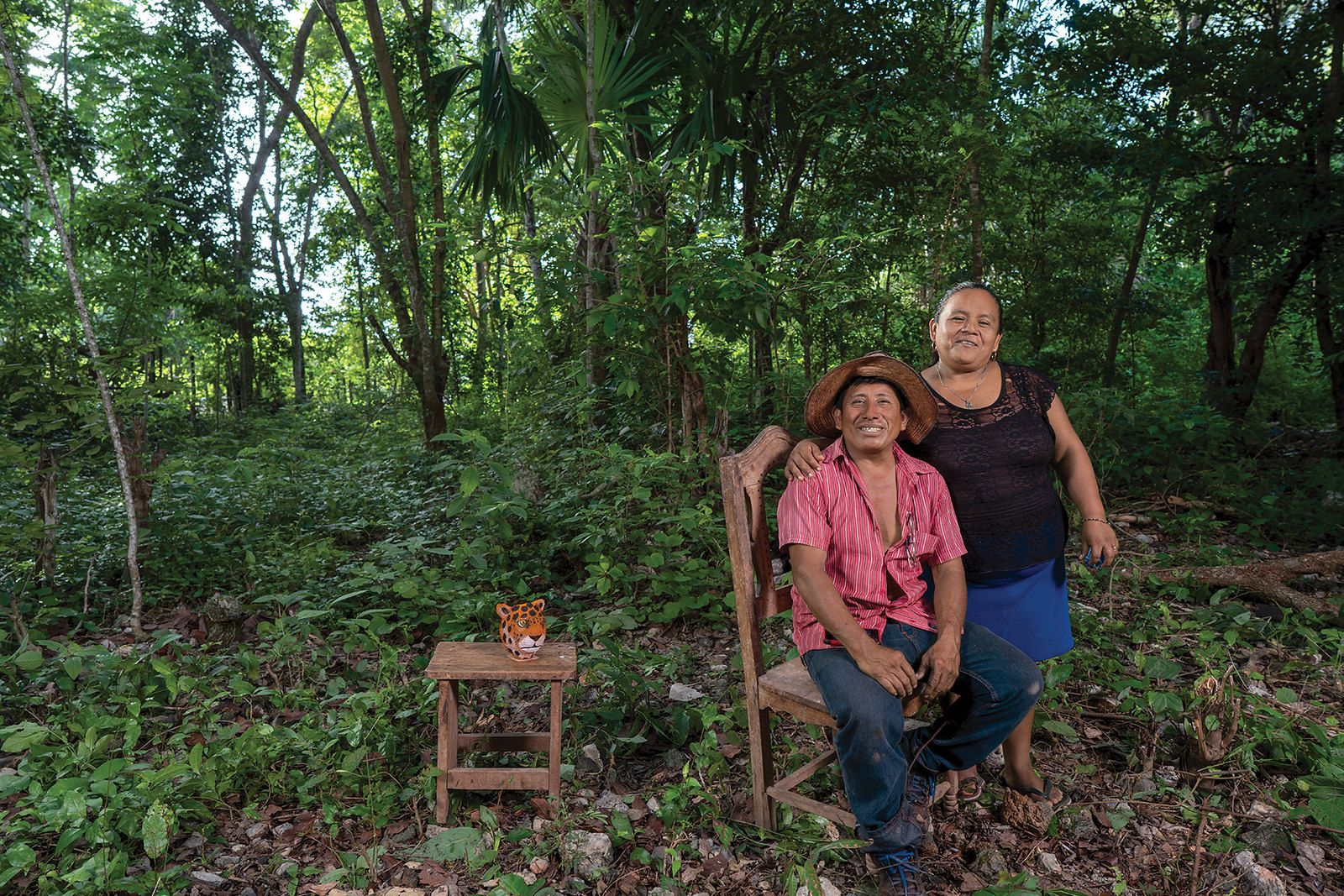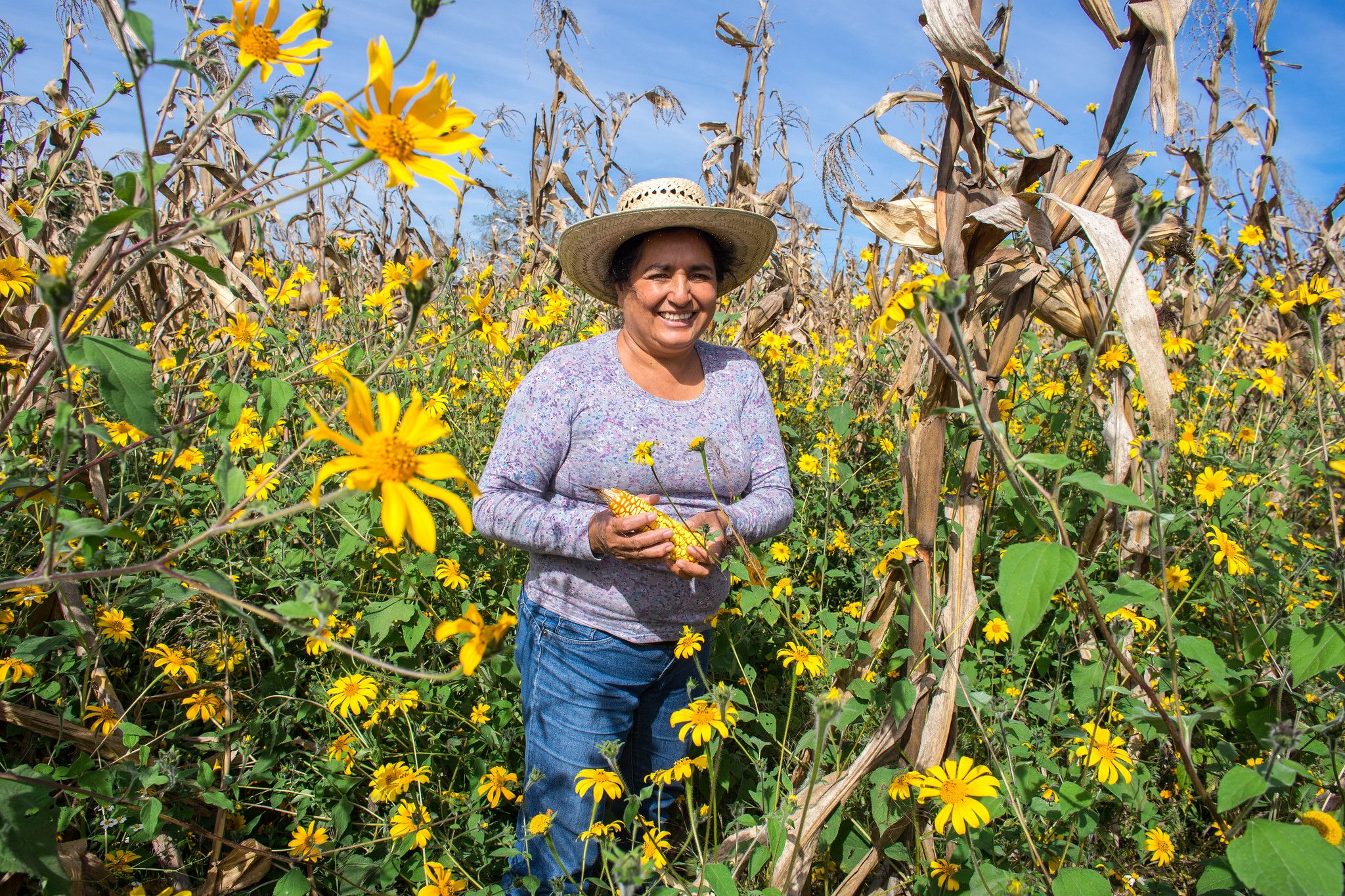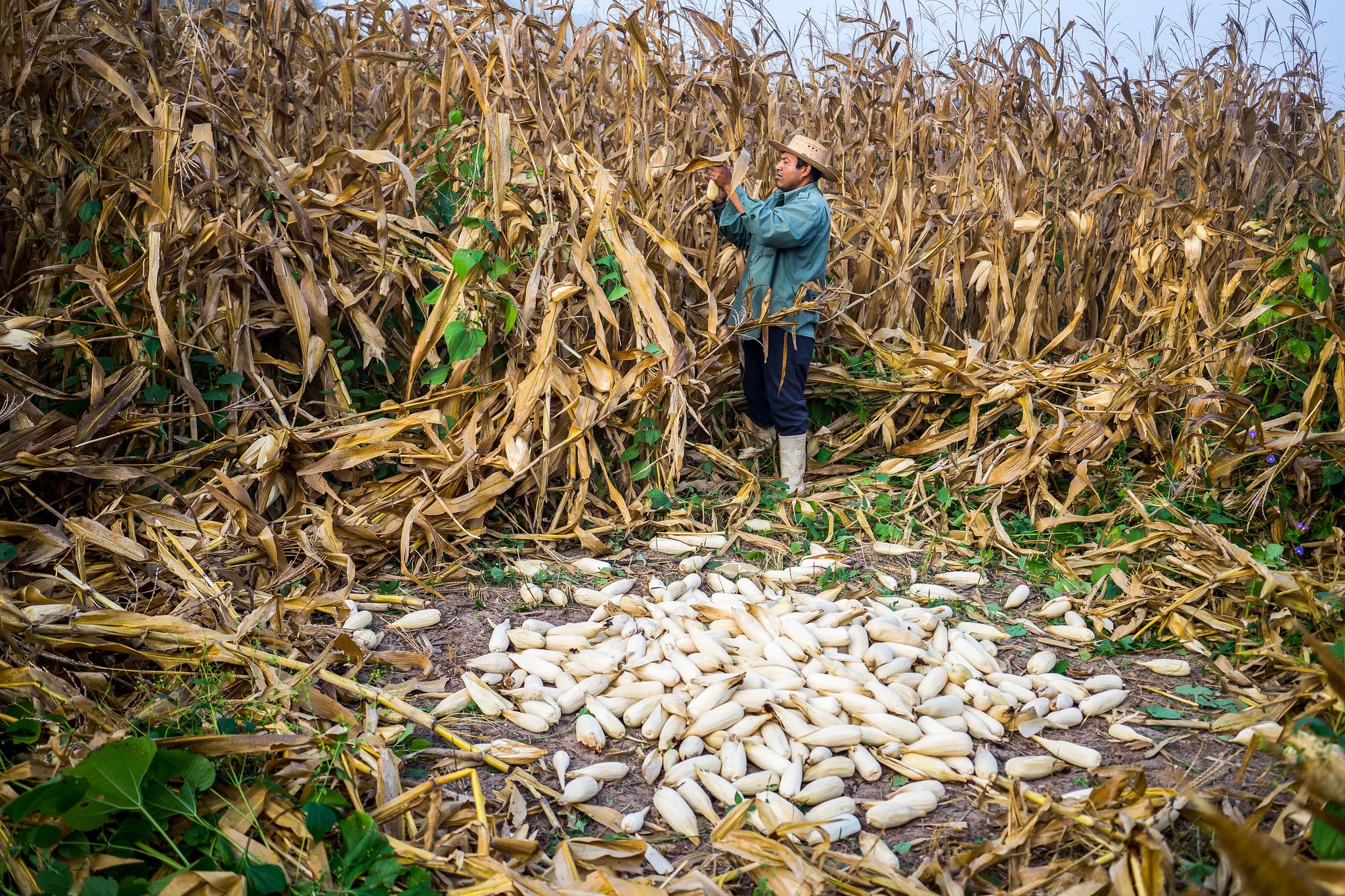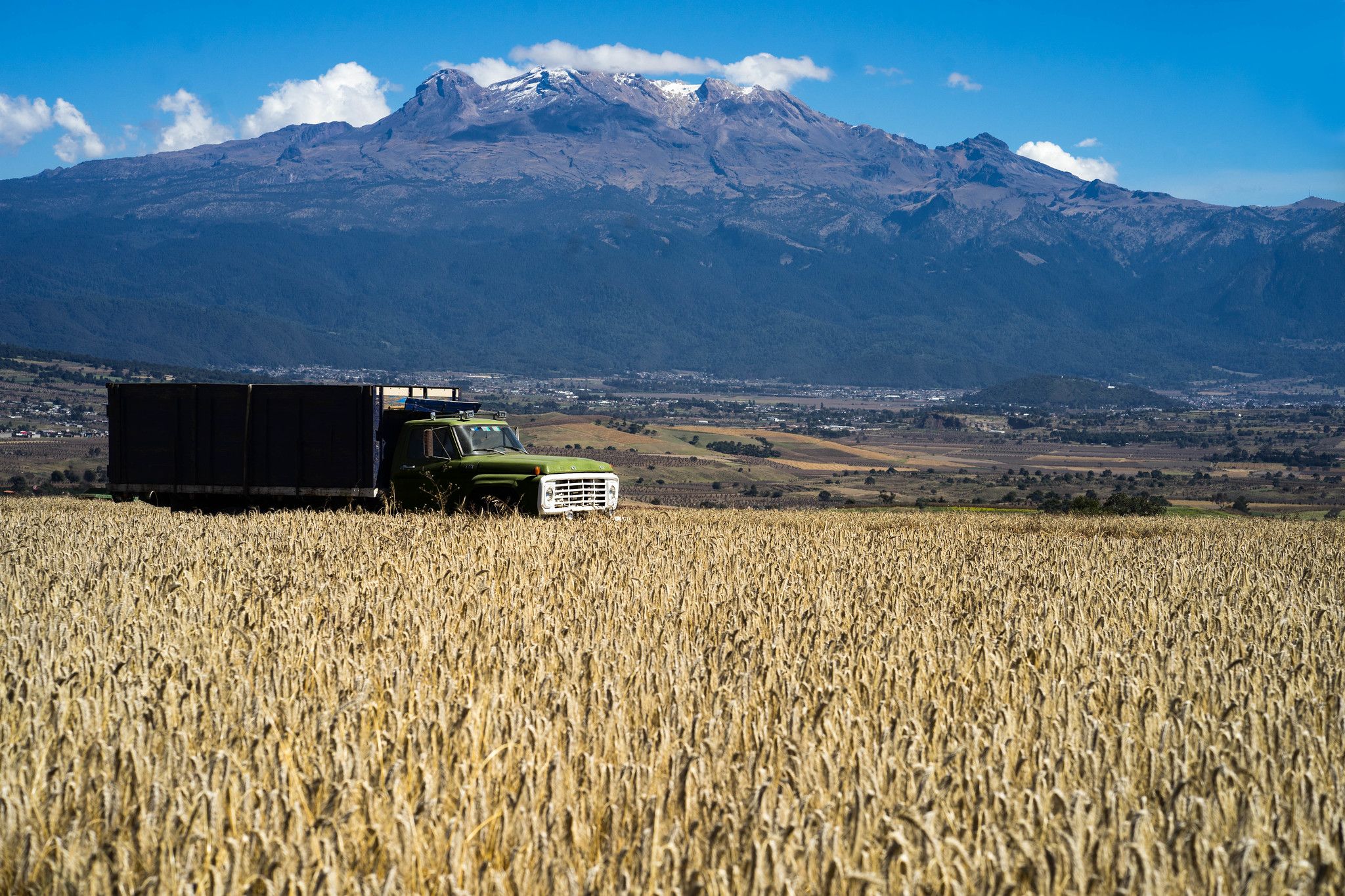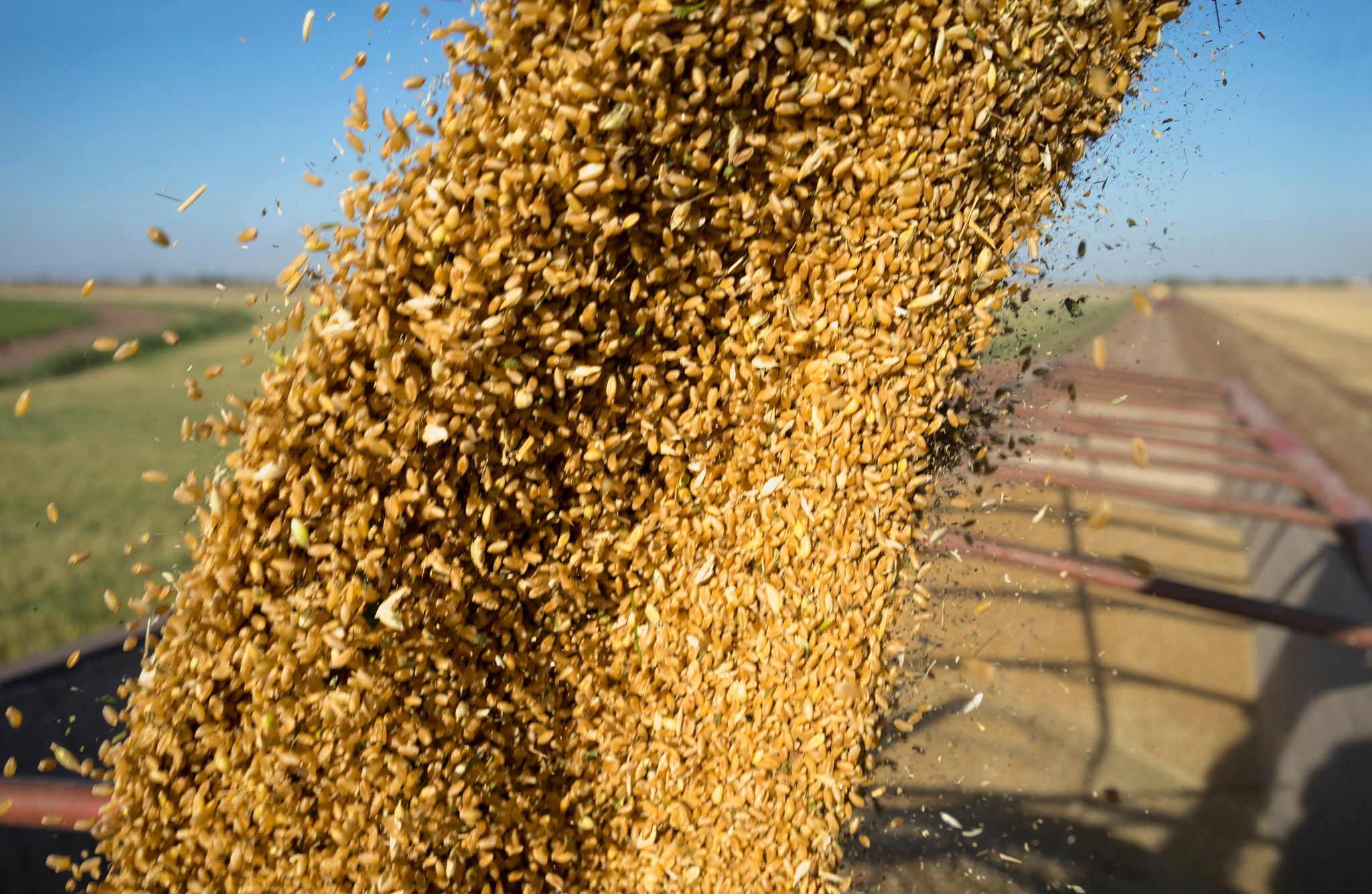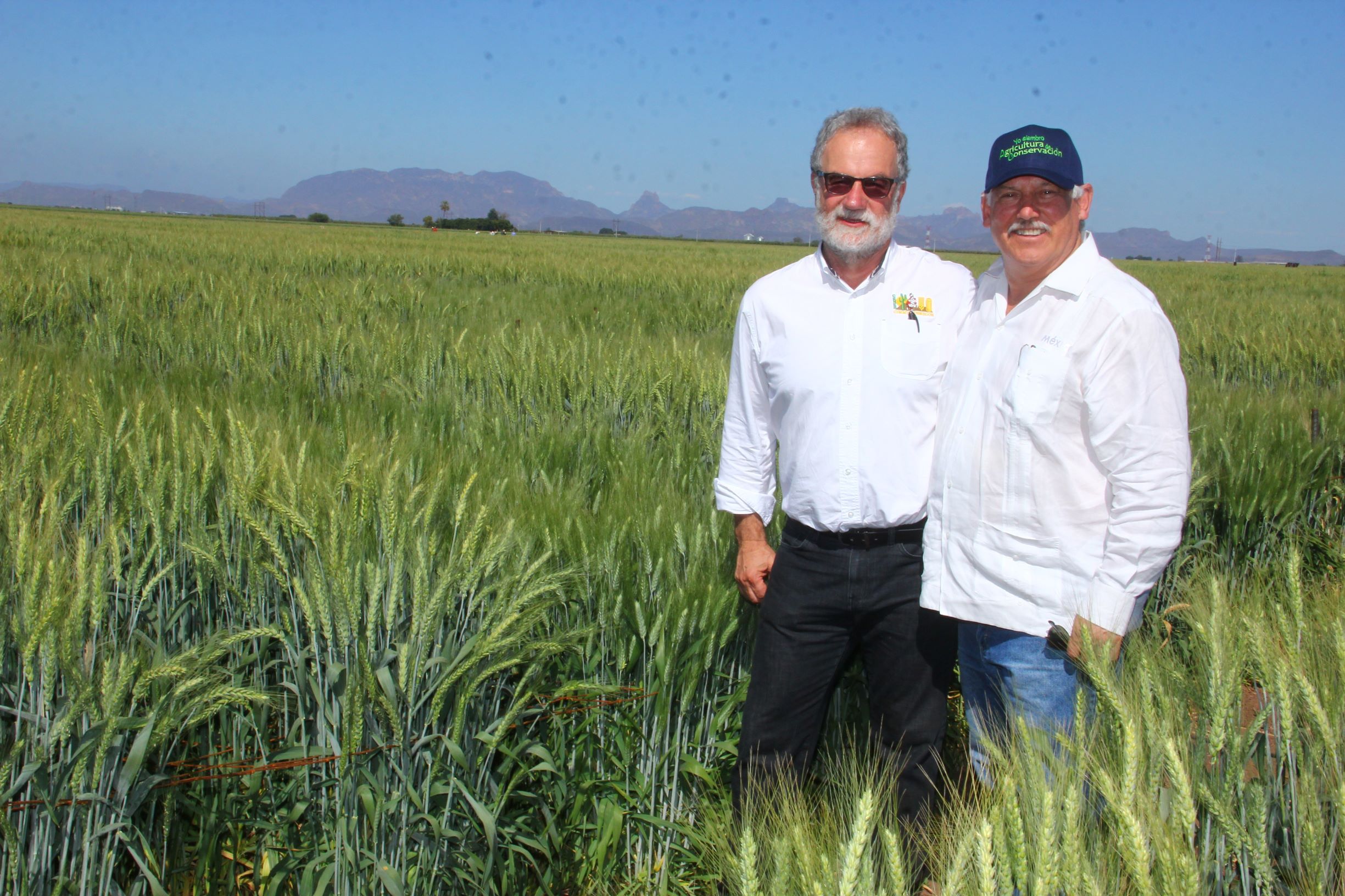Location: Americas
CIMMYT has several offices in the Americas, including global headquarters in Mexico and a regional office in Colombia. Activities are supported by an additional 140 hectares of stations in diverse agro-ecological zones of Mexico. CIMMYT’s genebank in Mexico stores 27,000 maize and 170,000 wheat seed collections – key to preserving the crop genetic diversity of the region. CIMMYT projects range from developing nutritionally enhanced maize to mapping regional climate change hot spots in Central America. The comprehensive MasAgro project aims to increase wheat production in Mexico by 9 million tons and maize production by 350,000 tons by 2030. CIMMYT promotes regional collaboration and facilitates capacity building for scientists, researchers and technicians.
Simon Fonteyne
Simon Fonteyne is a cropping systems agronomist tasked with the coordination of a network of research platforms in Latin America, through which local collaborators adopt sustainable intensification practices to local agro-ecological conditions and promote them to local farmers.
Velu Govindan
Velu Govindan is a senior wheat breeder at the CIMMYT’s Global Wheat Program in Mexico. He has been engaged in wheat improvement research for the past 15 years. During this period, he made significant contributions towards the development and release of more than 20 biofortified wheat varieties in South Asia with enhanced zinc and iron concentration, with tolerance to rusts & other foliar diseases and climate change-induced heat and drought stress.
Govindan is leading the two of the spring wheat breeding pipelines targeted to early maturing wheat environments with wheat yield potential, climate resilience and yield stability across diverse environments by combining traditional breeding and cutting-edge genomic tools. He is leading the CIMMYT breeding efforts towards mainstreaming grain Zn across elite wheat lines through accelerated breeding strategies. He has published more than 80 peer-reviewed journal articles and 15 book chapters. He received young scientist award from India.
New role in Nepal is “a dream come true”
Cynthia Carmona will always remember the directive her supervisor gave to a researcher panicked by mounting paperwork: You go and work on the science. We’ll take care of the admin part.
“They already have their hands full with research and building partnership strategies. They shouldn’t have to be concerned about whether or not an invoice has been sent,” she says.
Growing up in the Mexican state of Sonora, Carmona was aware of the International Maize and Wheat Improvement Center’s (CIMMYT) Obregon experimental station from a young age. “It was an organization that I knew existed, but all I knew was that they worked on wheat.”
After studying international relations at Tecnológico de Monterrey in Mexico City, Carmona spent a couple of years working in government and the private sector but she remained on the look-out for global-facing opportunities. Drawn to the opportunity to work with donors, Carmona joined CIMMYT’s Project Management Unit (PMU) six years ago.
“When I first arrived it was more of a grant management unit and we were divided by grant cycle. One person would work on proposals, another on contracts and so on, so you didn’t really get to see the whole process from start to finish.”
The unit has evolved since then, and growing responsibility means that the team is now divided by specialty, from donor relations and resource mobilization to grant management and monitoring and evaluation. “The structure we have now definitely gives you a broader understanding of each project.”
Carmona stresses that even though PMU staff don’t work in the field or in laboratories, they do make significant contributions to project implementation by encouraging smoother processes, alleviating administrative problems and ‘speaking a common language’ between researchers and management. When she took on the role of grant management coordinator, she impressed upon her team the extent to which their action or inaction could affect the projects they support. “Making things happen was my favorite part of the role, and I saw my job as that of an ‘issue solver’.”
Carmona is currently based in Kathmandu, Nepal, where she is serving as interim project manager on CIMMYT’s Cereal Systems Initiative for South Asia (CSISA) project.
“I’m very excited about this new opportunity. CSISA has always been a flagship project for CIMMYT, so when they invited me to help them it was like a dream come true.”
She first visited Nepal in December 2018, where she spent time shadowing the outgoing manager who provided her with an introduction to the country, the region and the project itself.
“It was like a two-week bootcamp. But even though it was intense, I didn’t feel overwhelmed.”
Working in PMU, Carmona explains, provides a solid background for project management and an understanding of how CIMMYT projects work, from start to finish, as well as how to communicate with funders and build shared knowledge by bringing people together, from scientists and researchers to program and service unit staff.
Besides learning about how a project is run on-the-ground, Carmona is most looking forward to gaining field experience while in Nepal. “Talking to farmers and project teams, listening to their experiences and witnessing CIMMYT’s work on-the-ground really gives you a sense of belonging and a connection to our mission.”

Chicago’s tortillas are better than ever, thanks to Masienda’s heirloom corn from Oaxaca
In Mexico there are about 3 million subsistence farmers producing heirloom corn.
Wheat Yield Consortium
The Wheat Yield Consortium conducts research on wheat genetics and physiology to improve plant structure, increase the resilience and disease resistance of wheat, and its yield potential in Mexico and abroad. In 2015, main achievements included:
- More than 100 agronomic and physiological traits of 60 elite lines of high-yielding potential from CIMMYT Core Germplasm II set (CIMCOG II) were evaluated with high throughput phenotyping technologies.
- Five elite lines were selected after analyzing three years of data collected from consecutive trials of the CIMCOG I set. Some lines were chosen for their resistance to lodging.
- Aerial phenotyping platforms with remote sensors where used to identify five high-yielding and drought tolerant lines and seven outstanding heat tolerant lines from more than 600 elite lines tested in the field.
- Nine Mexican students undertook doctoral studies in prestigious international universities with the benefit of acknowledged experts as advisers and using data from the MasAgro Wheat field trials. Three students concluded their doctoral studies and two more are in line to achieve their degree in the first semester of 2016.
Objectives
- To raise wheat yield potential by 2 percent globally, with a view to increasing yield potential by 50 percent over 20 years.
- To raise wheat production by 350,000 tons (10 percent) in 10 years, 750,000 tons (22 percent) in 15 years and 1.7 million tons (50 percent) in 20 years, in the same area currently devoted to wheat production in Mexico.
MasAgro Farmer
MasAgro Farmer, a component of CIMMYT’s MasAgro project, develops a sustainable intensification strategy for maize, wheat and similar grains by building hubs based on research platforms, demonstration modules and extension areas where sustainable farming practices and technologies are tested, improved and adapted. In 2015, main achievements included:
- Average maize and wheat yields obtained by farmers participating in MasAgro were 20.5 percent and 2.8 percent higher, respectively, than the average yields achieved in the regions of Mexico where they live.
- The average net income of maize and wheat farmers participating in MasAgro was 23 percent and 4 percent higher, respectively, than the average net incomes of their region in Mexico.
- MasAgro set up 12 hubs with 43 research platforms and 452 demonstration modules that developed, tested, adapted and disseminated sustainable farming practices and technologies.
- 46 technicians were certified in sustainable agriculture and another 55 begun their training in 2015. CIMMYT has so far certified 294 MasAgro technicians.
- 4,009 extension areas were registered in MasAgro’s electronic field books.
- MasAgro experts developed 17 new machinery prototypes and produced 26 precision farming tools and machines for sustainable farming of maize, wheat and similar grains.
OBJECTIVES
- To promote conservation and precision agriculture practices to sustainably increase maize and wheat production in Mexico.
- To develop skills and to transfer knowledge and technologies specifically adapted to meet the needs of the small scale farmer.
- To reduce the impact of climate change in agriculture.
MasAgro Biodiversidad
MasAgro Biodiversidad (Biodiversity), a component of CIMMYT’s MasAgro project, studies and characterizes maize and wheat genetic diversity for use in breeding programs, which develop wheat varieties and maize hybrids improved through conventional technologies. These hybrids are better adapted to climate change, more resistant to pests and diseases and have higher yield potential.
In 2015, MasAgro Biodiversity’s main results were:
- MasAgro Biodiversity began a comprehensive study of maize genetic diversity by obtaining, processing and analyzing the world’s largest genotypic data set to help scientists identify new genes of interest for maize breeding programs.
- More than 2 billion genotypic data and more than 870,000 phenotypic data of maize field trails have been processed and uploaded to MasAgro Biodiversity’s database and repository making them available to the scientific community via the project website.
- A high level of Tar Spot resistance was confirmed in maize landraces native to the state of Oaxaca in Mexico and Guatemala, which will be used to breed new resistant maize lines.
To order seeds from CIMMYT, please fill a seed request.
OBJECTIVES
- To explore in depth the original genetic composition of maize and wheat through the analysis of hundreds of thousands of seeds stored in gene banks in Mexico.
- To make available to the national and international scientific community information on key agronomic characteristics such as tolerance to heat and drought, or resistance to important pests.
- To offer a genetic analysis service that taps on the best features of maize and wheat through conventional improvement programs for both grains.
- To contribute to long term food security in Mexico and the rest of the world, despite the impact of climate change and the scarcity of natural resources such as water, nutrients and oil.
MasAgro (Crops for Mexico)
MasAgro is a research for rural development project supported by Mexico’s Secretariat of Agriculture and Rural Development.
The project promotes the sustainable intensification of maize and wheat production in Mexico. MasAgro develops capacities and research activities aimed at raising maize and wheat yields stability and profitability in Mexico. The program also seeks to increase farmer income and production systems sustainability by implementing collaborative research initiatives, developing and promoting the use of improved seed, sustainable technologies and farming practices.
OBJECTIVES
- Obtain higher and more stable yields, increase farmer income and promote natural resource conservation in agriculture.
- Promote collaboration and integration between participants of the maize, wheat and similiar grains value chains to develop, disseminate and adopt sustainable farming solutions in target agricultural zones.
- Promote the growth of a Mexican seed sector and contribute to raise maize productivity in Mexico by conducting collaborative research in maize genetic resources and developing yellow and white maize hybrids of high yield potential and stability.
- Use the genetic resources CIMMYT conserves and develop cutting-edge technologies and capacities in Mexico to accelerate the development of stable, high-yielding and climate resilient maize and wheat varieties.
- Strengthen Mexico’s research capacities to increase yield potential and climate resilience of improved wheat varieties.
COMPONENTS
MasAgro Maize
MasAgro Maize, a component of CIMMYT’s MasAgro project, promotes the sustainable development of both maize grain and seed producers by breeding maize hybrids with conventional technologies and improving native maize seed in collaborative breeding projects with participant farmers. MasAgro’s improved maize seeds are tested in collaboration with the local seed sector that, in turn, commercializes the best adapted materials in Mexico’s growing regions. In 2015, MasAgro Maize’s main results were:
- 16 collaborative breeding trials of native maize were established with participant farmers in eight communities in the state of Oaxaca in southwest Mexico.
- 48 small and medium-sized Mexican seed companies collaborated with MasAgro Maize. Together, they produced 1.2 million 20 kilogram bags containing 60,000 seeds of hybrid maize.
- Participating companies increased sales of MasAgro hybrid seed by 44 percent from 2014 to 2015.
- Local seed companies sold 26 MasAgro hybrids branded under 100 commercial names in 19 states, 78 regions and 257 municipalities of Mexico.
OBJECTIVES
- To have the technology and genetic materials needed to raise average rainfed maize production in Mexico from 2.2 to 3.7 tons per hectare over a 10 year period.
- To increase the use of high-yielding, improved maize seed in Mexico over an area of between 1.5 and 3 million hectares.
- To raise Mexico’s production of rainfed maize between 5 and 9 million tons in 10 years.
- To promote the development of the maize seed industry in Mexico.
- To strengthen food security in Mexico and in the rest of the world.
MasAgro Maize partners are encouraged to apply for licenses to commercialize CIMMYT maize hybrids, following the procedures described in the Allocations page.
MasAgro Wheat
MasAgro Wheat, a component of CIMMYT’s MasAgro project, conducts research on wheat genetics and physiology to improve plant structure, increase the resilience and disease resistance of wheat, and its yield potential in Mexico and abroad. In 2015, main achievements of MasAgro Wheat included:
- More than 100 agronomic and physiological traits of 60 elite lines of high-yielding potential from CIMMYT Core Germplasm II set (CIMCOG II) were evaluated with high throughput phenotyping technologies.
- Five elite lines were selected after analyzing three years of data collected from consecutive trials of the CIMCOG I set. Some lines were chosen for their resistance to lodging.
- Aerial phenotyping platforms with remote sensors where used to identify five high-yielding and drought tolerant lines and seven outstanding heat tolerant lines from more than 600 elite lines tested in the field.
- Nine Mexican students continued their doctoral studies in prestigious international universities with the benefit of acknowledged experts as advisers and using data from the MasAgro Wheat field trials. Three students concluded their doctoral studies and two more are in line to achieve their degree in the first semester of 2016.
Objectives
- To raise wheat yield potential by 2 percent globally, with a view to increasing yield potential by 50 percent over 20 years.
- In the case of Mexico, to raise wheat production by 350,000 tons (10 percent) in 10 years, 750,000 tons (22 percent) in 15 years and 1.7 million tons (50 percent) in 20 years, in the same acreage currently devoted to wheat production.
Seeds of Discovery (SeeD)
Seeds of Discovery (SeeD) studies and characterizes maize and wheat genetic diversity for use in breeding programs, which develop wheat varieties and maize hybrids improved through conventional technologies. These hybrids are better adapted to climate change, more resistant to pests and diseases and have higher yield potential.
In 2015, SeeD’s main results were:
- SeeD began a comprehensive study of maize genetic diversity by obtaining, processing and analyzing the world’s largest genotypic data set to help scientists identify new genes of interest for maize breeding programs.
- More than 2 billion genotypic data and more than 870,000 phenotypic data of maize field trails have been processed and uploaded to SeeD’s database and repository making them available to the scientific community via the project website.
- A high level of Tar Spot resistance was confirmed in maize landraces native to the state of Oaxaca in Mexico and Guatemala, which will be used to breed new resistant maize lines.
To order seeds from CIMMYT, please click here.
OBJECTIVES
- To explore in depth the original genetic composition of maize and wheat through the analysis of hundreds of thousands of seeds stored in gene banks in Mexico.
- To make available to the national and international scientific community information on key agronomic characteristics such as tolerance to heat and drought, or resistance to important pests.
- To offer a genetic analysis service that taps on the best features of maize and wheat through conventional improvement programs for both grains.
- To contribute to long term food security in Mexico and the rest of the world, despite the impact of climate change and the scarcity of natural resources such as water, nutrients and oil.
Mexican Secretary of Agriculture joins new partners and longtime collaborators in Obregon
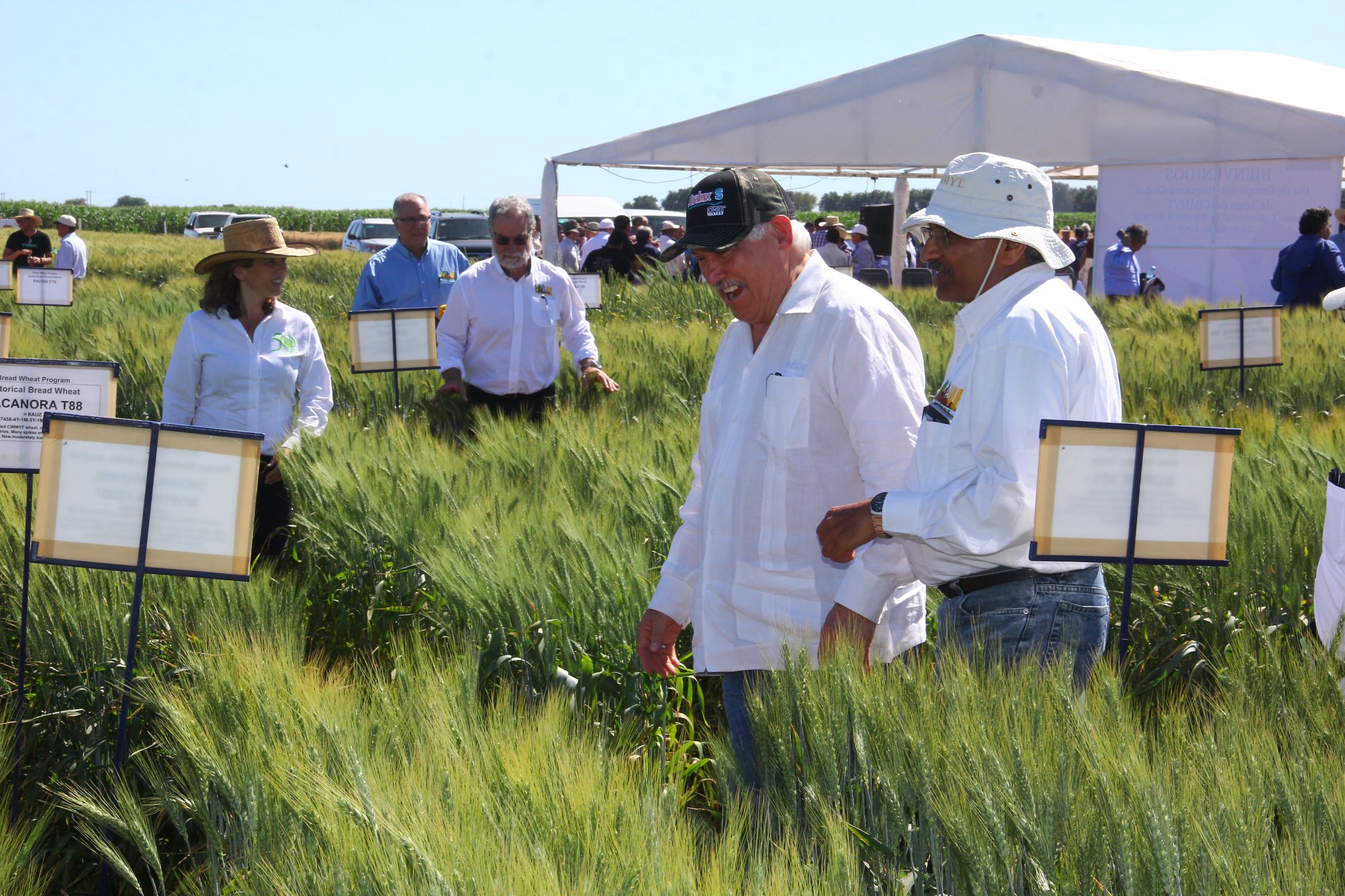
“The dream has become a reality.” These words by Victor Manuel Villalobos Arambula, Secretary of Agriculture and Rural Development of Mexico, summed up the sentiment felt among the attendees at the International Maize and Wheat Improvement Center (CIMMYT) Global Wheat Program Visitors’ Week in Ciudad Obregon, Sonora.
In support of the contributions to global and local agricultural programs, Villalobos spoke at the week’s field day, or “Dia de Campo,” in front of more than 200 CIMMYT staff and visitors hailing from more than 40 countries on March 20, 2019.
Villalobos recognized the immense work ahead in the realm of food security, but was optimistic that young scientists could carry on the legacy of Norman Borlaug by using the tools and lessons that he left behind. “It is important to multiply our efforts to be able to address and fulfill this tremendous demand on agriculture that we will face in the near future,” he stated.
The annual tour at the Campo Experimental Norman E. Borlaug allows the global wheat community to see new wheat varieties, learn about latest research findings, and hold meetings and discussions to collaborate on future research priorities.
Given the diversity of attendees and CIMMYT’s partnerships, it is no surprise that there were several high-level visits to the field day.
A high-level delegation from India, including Balwinder Singh Sidhu, commissioner of agriculture for the state of Punjab, AK Singh, deputy director general for agricultural extension at the Indian Council of Agricultural Research (ICAR), and AS Panwar, director of ICAR’s Indian Institute of Farming Systems Research, joined the tour and presentations. All are longtime CIMMYT collaborators on efforts to scale up and disseminate sustainable intensification and climate smart farming practices.
Panwar, who is working with CIMMYT and partners to develop typologies of Indian farming systems to more effectively promote climate smart practices, was particularly interested in the latest progress in biofortification.
“One of the main objectives of farming systems is to meet nutrition of the farming family. And these biofortified varieties can be integrated into farming systems,” he said.
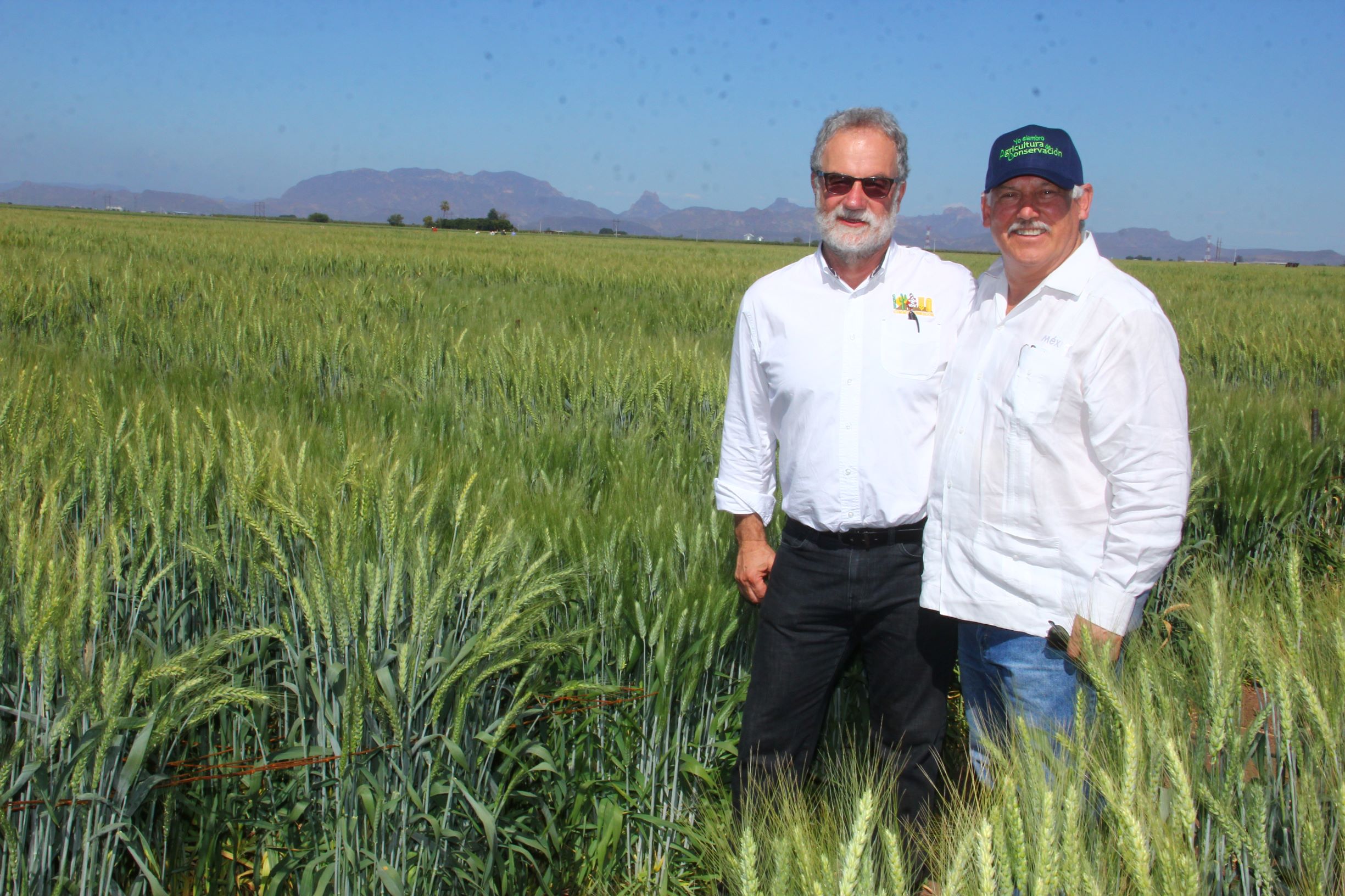
In addition, a delegation from Tunisia, including dignitaries from Tunisia’s National Institute of Field Crops (INGC), signed a memorandum of understanding with CIMMYT officials to promote cooperation in research and development through exchange visits, consultations and joint studies in areas of mutual interest such as the diversification of production systems. INGC, which conducts research and development, training and dissemination of innovation in field crops, is already a strong partner in the CGIAR Research Program on Wheat’s Precision Phenotyping Platform for Wheat Septoria leaf blight.
At the close of the field day, CIMMYT wheat scientist Carolina Rivera was honored as one of the six recipients of the annual Jeanie Borlaug Laube Women in Triticum (WIT) Early Career Award. The award offers professional development opportunities for women working in wheat. “Collectively, these scientists are emerging as leaders across the wheat community,” said Maricelis Acevedo, Associate Director for Science for Cornell University’s Delivering Genetic Gain in Wheat Project, who announced Rivera’s award.
CGIAR Research Program on Wheat and Global Wheat Program Director Hans Braun also took the opportunity to honor and thank three departing CIMMYT wheat scientists. Alexey Morgounov, Carlos Guzman and Mohammad Reza Jalal Kamali received Yaquis, or statues of a Yaqui Indian. The figure of the Yaqui Indian is a Sonoran symbol of beauty and the gifts of the natural world, and the highest recognition given by the Global Wheat Program.
The overarching thread that ran though the Visitor’s Week was that all were in attendance because of their desire to benefit the greater good through wheat science. As retired INIFAP director and Global Wheat Program Yaqui awardee Antonio Gándara said, recalling his parents’ guiding words, “Siempre, si puedes, hacer algo por los demas, porque es la mejor forma de hacer algo por ti. [Always, if you can, do something for others, because it’s the best way to do something for yourself].”
